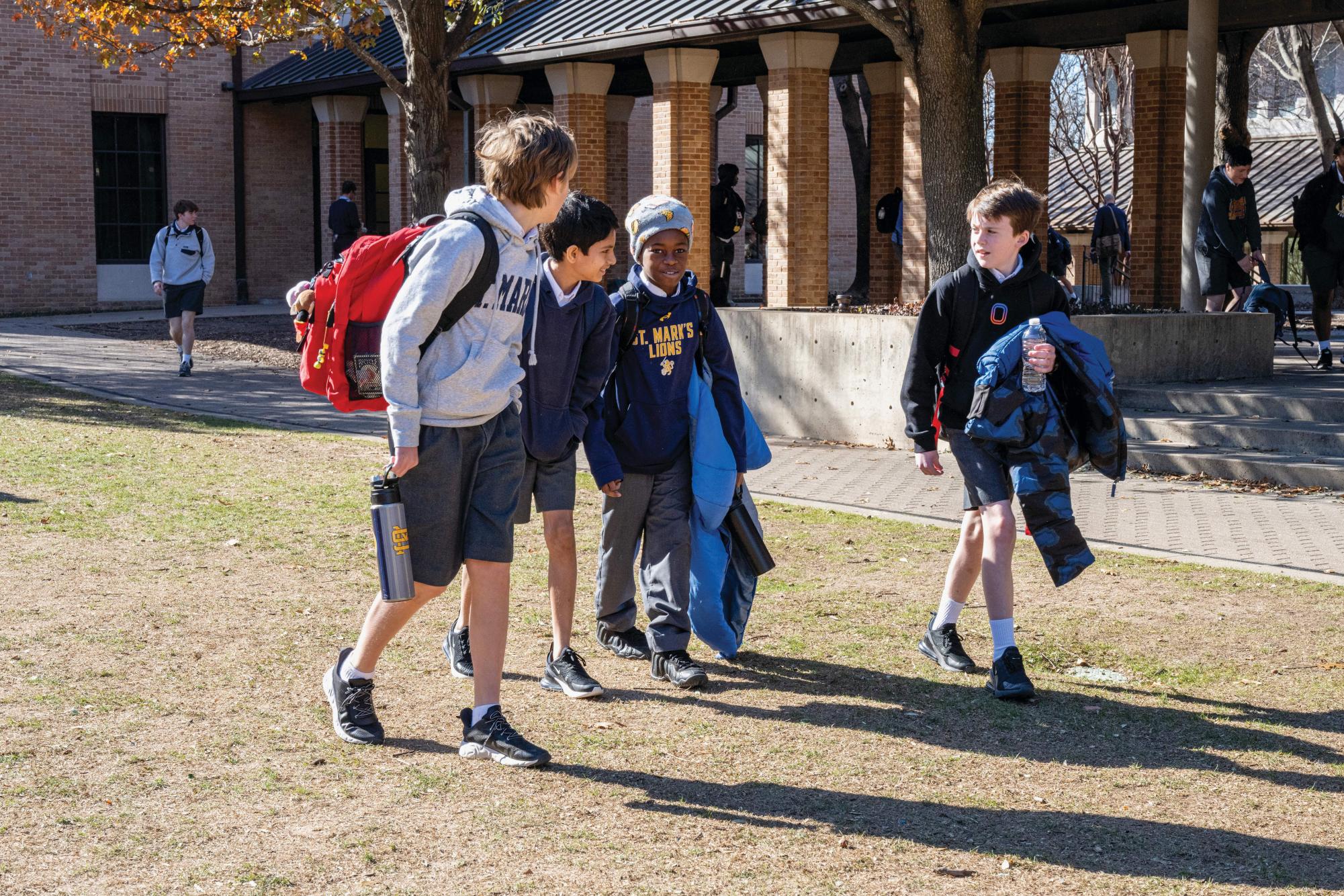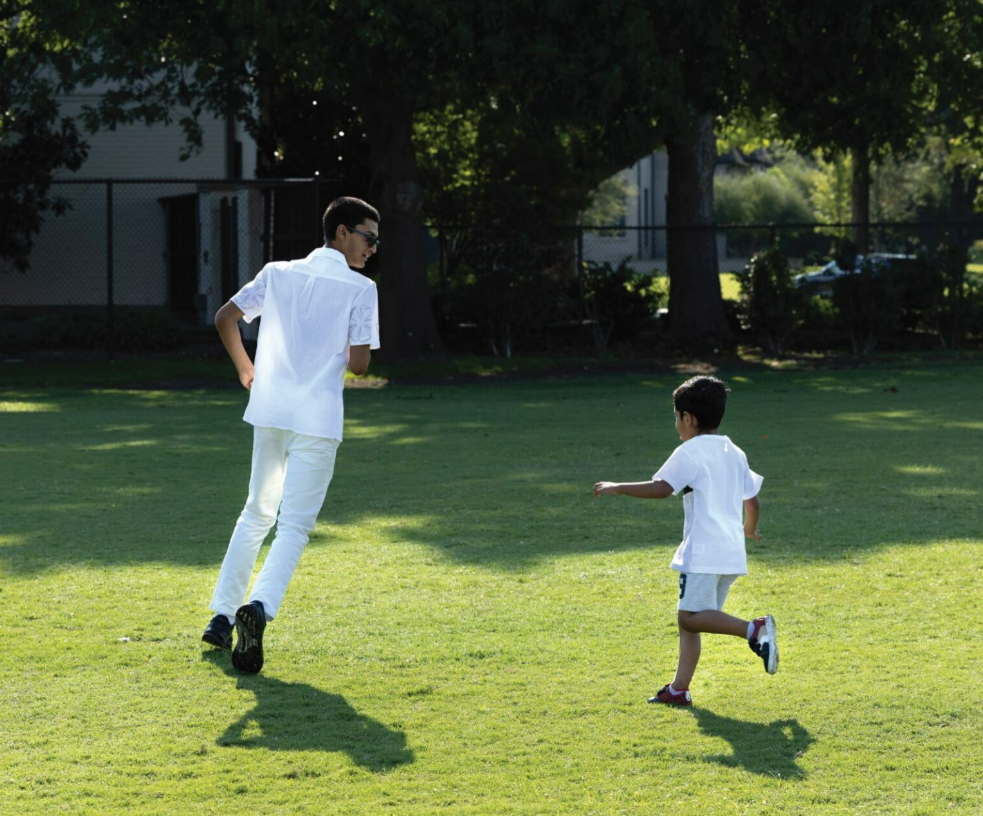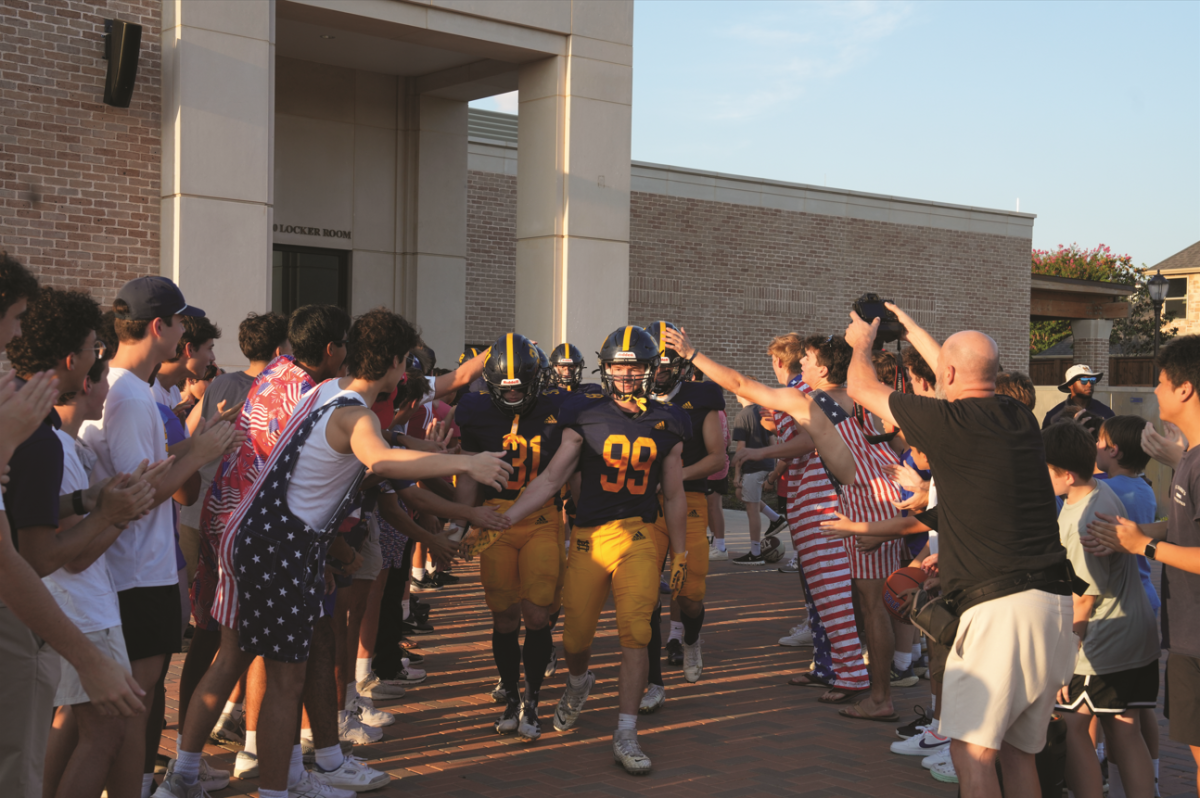Over their years growing as students and men, Marksmen experience significant changes in both their campus and personal lives– from participating in school sports for the first time to attending their first homecoming– that inevitably, uniquely shape them on their journeys of personal growth.
Throughout all these unique changes and experiences, though, one aspect of the school experience has weathered the test of time– the uniform. Whether it be in the blistering heat or the bitter cold, everyday Marksmen don their classic oxford shirts, short grey shorts and worn-out black shoes in preparation for the workday, participating in a tradition as old as the school itself.
But recently, with temperatures plummeting below freezing, students, blasted by the dry winds and beaten by the unrelenting freeze, have begun to wear additional outerwear, most controversially sweatpants that Marksmen put over their school shorts, to try and avoid the crippling cold.
This recent clothing addition, however, doesn’t strictly follow the uniform code, creating a confusing situation for students and staff alike who must decide what is and isn’t appropriate for school.
“Some clothes aren’t part of our uniform, but boys still try to wear them,” Lenaeu said. “So it’s our job as administrators or faculty to let the boys know that we want them to stay in their uniform, and it doesn’t have to be a long that we want them to stay in their uniform, and it doesn’t have to be a long conversation. It’s just a matter of conforming to the expectations that we hold all the boys to.”
More than just a rule or tradition followed for the sake of following it, however, uniforms serve an important role in the culture of the school, a culture that would degrade if certain cornerstones were ignored.
“I think wearing sweatpants blurs the lines,” Director of the Marksmen Wellness Center Dr. Gabby Reed said. “There’s an ethos here, and a certain level of behavior is expected. Uniforms contribute to that: they set the expectation that you’re a Marksman.”
This culture, which all 12 grades participate in, is largely cultivated by setting expectations of what it means to be a Marksman, leading many underclassmen to look up to their older peers for how they should behave.
“When you’re not adhering to dress codes, you’re sending a particular message to the younger boys,” Assistant Head of the Upper School Jason Leneau said. “You’re choosing to self-express, but that’s not what we’ve asked you to do as a student. It’s important to recognize that we’re all asked to do certain things, and those are non-negotiables.”
Additionally, uniforms can help students stay psychologically focused and engaged during the academic day, enabling them to perform better in their classes by creating an extremely noticeable change in dress between being at home compared to being in school.
“Uniforms do a lot for us in terms of getting into the mindset of school,” Reed said. “When you dress professionally, you act in different ways: your brain is more geared towards getting work done.”
Beyond just the academic world, uniforms are meant to prepare students for the challenges they’ll face in college and beyond.
“Even though I understand the weather changes sporadically, I think it’s just a level of professionalism,” Leneau said. “You’re building good habits to dress neatly and appropriately so that when you’re out in the real world, you have a professional sense of self to handle business.”
By enforcing a dress code, students are freed from stress caused by social pressures, bringing the community together by creating similarities between students and giving students equal footing to stand on.
“When I was allowed to wear whatever I wanted, I would spend a lot of time struggling to pick an outfit and worrying about what other people would think,” Reed said. “And although uniforms didn’t give me the opportunity to express myself as fully, they freed me from a lot of anxiety and stress. It’s harder to pick on people if they don’t stand out in ways through their clothes and appearances–it’s just one less thing to pick on someone about.”
Especially with team sports or clubs, uniforms can help a team come closer together by creating another commonality between teammates, heightening the sense of connection they experience.
“When you’re representing your sports team, you’re going to dress nicer because you take yourself more seriously,” said Leneau. “People recognize that and then hold you to a higher standard, but when we start to deviate from that, it becomes more individualized. Now we’re fragmented and not a part of a community: we’re showing our individuality, but that’s not necessarily what we’re looking for. “
While the uniform policy definitely has its positives, one major flaw is the inability to express oneself. People often use clothing as a way to express their beliefs, identity and cultural affiliations, and many students across campus are barred from wearing apparel that demonstrates this expression by uniforms. However, there are subtle ways in which students can navigate the rules to show their support or stand out among their classmates
“You can’t get around the uniform policy, but there are other ways to express yourselves,” Reed said. “For example, I see guys wearing bracelets that represent a cause they support or wearing different shoes. I know these are small ways to express yourself, but they’re still options to differentiate yourself from the crowd.”
In addition to clothing, several other great methods also serve as means of self-expression, providing students with additional outlets to express their personal and creative interests in unique ways.
“I would encourage students to find other outlets of expression as well,” Gabby said. “Artistic outlets, like musicals or drawing, are great ways to put yourself out there in tangible and visible ways that don’t include your uniform or outfit.”
The ultimate-purpose of the uniform is to unite hundreds of once strangers in the hope that one day they will become brothers, not separated by their differences but supported by them.
“We should embrace and applaud people’s differences,” Reed said. “Things that set us apart can actually be beneficial as we get older. The opposite of courage in our society is not cowardice, it’s conformity.”
Although students may encounter certain difficulties with wearing their traditional uniforms, the long-term benefits that come from wearing uniforms outweigh the momentary inconveniences that they may pose and create an irreplaceable culture at the school.
“The uniform helps to emphasize the school’s democratic principles and our belief that it is internal strength, not external trimmings, which determine a person’s individuality and worth,” Leneau said. “I’m speaking to, again, our collective effort to try and help people elevate their appearances to take themselves seriously and engage in this community in the best way.”







